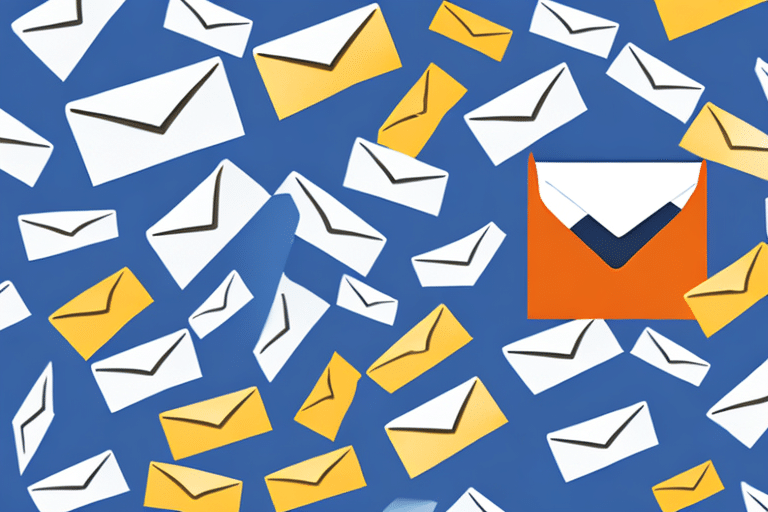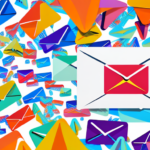7 Tips for Successful Cold Emailing
Are you looking to grow your business and connect with more potential clients or customers? Cold emailing may be the solution you're looking for. However, it's crucial to implement it correctly to avoid coming across as spammy or intrusive. In this article, we'll provide you with seven tips for successful cold emailing – from understanding your target audience to leveraging data analytics for continuous improvement.
1. Understand Your Target Audience
Before you start sending out cold emails, it's essential to have a deep understanding of your target audience. Knowing who they are, their pain points, and what they care about will allow you to craft personalized and relevant messages.
Conduct Market Research
Utilize market research methods such as surveys, interviews, and analyzing industry reports to gather insights about your potential clients. Tools like Statista and SurveyMonkey can provide valuable data to help you segment your audience effectively.
Analyze Customer Data
Review your existing customer data to identify trends and common characteristics. This information can help you tailor your cold emails to address specific needs and preferences.
2. Craft Compelling Subject Lines
Your subject line is the first thing recipients see, making it a critical factor in whether your email gets opened. A well-crafted subject line can significantly increase your open rates.
Be Clear and Concise
Keep your subject lines short and to the point. Aim for fewer than 50 characters to ensure they display properly on all devices.
Personalize When Possible
Including the recipient's name or company in the subject line can make your email feel more personalized and relevant. For example, "Jane, Increase Your Sales by 20% This Quarter" is more engaging than a generic "Increase Your Sales."
Use Action-Oriented Language
Incorporate verbs that encourage action, such as "Discover," "Improve," or "Boost," to make your subject lines more enticing.
According to Campaign Monitor, personalized subject lines can increase open rates by up to 26%.
3. Write Attention-Grabbing Introductions
Your introduction should hook the reader and encourage them to continue reading. A strong opening sets the tone for the rest of the email.
Start with a Personal Touch
Address the recipient by name and mention something specific about their business or recent achievements. This shows that you've done your homework and aren't sending a generic email.
Highlight a Common Pain Point
Begin by identifying a problem your recipient might be facing, and hint at how your solution can help. For example, "I noticed that your company is expanding rapidly, which can make managing customer relationships challenging."
Keep It Concise
Avoid lengthy introductions. Aim to convey your main point within the first two sentences to maintain the reader's interest.
4. Personalize Your Cold Emails to Build Trust
Personalization goes beyond using the recipient's name. It involves tailoring your email content to resonate with their specific needs and interests.
Reference Recent News or Updates
Mentioning recent developments related to the recipient’s company shows that you’re attentive and genuinely interested. For instance, "Congratulations on your recent product launch! I believe our services can help amplify your marketing efforts."
Segment Your Email List
Divide your email list into segments based on factors like industry, company size, or role. This allows you to send more targeted and relevant messages.
Provide Value Upfront
Offer something of value in your email, such as a free resource, a case study, or a personalized consultation. This builds goodwill and establishes your credibility.
5. Avoid Common Mistakes in Cold Emailing
Steering clear of common pitfalls can significantly enhance the effectiveness of your cold email campaigns.
Don’t Be Spammy
Avoid using excessive sales language, all caps, or too many exclamation points, as these can trigger spam filters and deter recipients.
Don’t Ignore Follow-Ups
Many responses come from follow-up emails. Don’t give up after the first attempt; instead, plan a sequence of follow-ups to gently remind the recipient.
Proofread Your Emails
Errors in spelling or grammar can undermine your professionalism. Always proofread your emails or use tools like Grammarly to ensure they are error-free.
6. Use Data and Analytics to Measure Success
Tracking and analyzing your email performance metrics is crucial for optimizing your cold email campaigns.
Monitor Key Metrics
Track open rates, click-through rates, response rates, and conversion rates to gauge the effectiveness of your emails. Tools like Mailchimp and HubSpot offer robust analytics features.
Conduct A/B Testing
Experiment with different subject lines, email copy, and call-to-actions to determine what resonates best with your audience. A/B testing can lead to significant improvements in engagement.
Adjust Based on Insights
Use the data collected to refine your email strategies continuously. Identify patterns and trends to make informed decisions that enhance your campaign’s performance.
According to OptinMonster, A/B testing can increase conversion rates by up to 49%.
7. Leverage Automation Tools
Automating your cold email campaigns can save time and ensure consistency, allowing you to focus on building relationships.
Choose the Right Tools
Platforms like Mailshake and Outreach.io offer features such as email sequencing, personalization, and analytics to streamline your campaigns.
Maintain a Personal Touch
While automation can handle repetitive tasks, ensure that your emails still feel personalized. Use dynamic fields and segmentation to tailor your messages effectively.
Regularly Update Your Campaigns
Periodically review and adjust your automated sequences based on performance data and changing business goals to keep your campaigns relevant and effective.
Conclusion
Cold emailing can be a powerful tool for growing your business when executed correctly. By understanding your target audience, crafting compelling subject lines, personalizing your messages, avoiding common mistakes, leveraging data analytics, and utilizing automation tools, you can create effective cold email campaigns that connect with potential clients and drive business growth. Continuously refine your strategies based on insights and stay updated with best practices to maximize your cold emailing success.
For more in-depth strategies and tools, consider exploring resources from HubSpot and Salesforce.






















